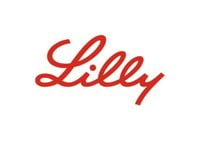Eli Lilly and Company (NYSE: LLY) saw its shares dip in premarket trading on Thursday, May 1, 2025, after the pharmaceutical giant revised its full-year non-GAAP earnings outlook downward, despite reporting impressive revenue figures driven by its weight loss and diabetes drugs. The company announced that it now expects adjusted earnings for fiscal year 2025 to fall between $20.78 and $22.28 per share, a decrease from its previous guidance of $22.50 to $24 per share. This revision is primarily attributed to a $1.57 billion deal charge linked to the acquisition of an oral cancer drug from Scorpion Therapeutics.
In its first-quarter earnings report, Eli Lilly revealed a remarkable revenue increase of 45% year-over-year, reaching $12.73 billion, exceeding analyst expectations. The surge was significantly fueled by the soaring demand for its blockbuster diabetes treatment, Mounjaro, which generated $3.84 billion in sales, marking a staggering 113% increase compared to the same quarter last year. Additionally, the company’s weight loss drug, Zepbound, also outperformed expectations, with sales amounting to $2.31 billion, a significant rise from the $517.4 million recorded in the previous year.
Despite the strong sales figures, Eli Lilly's shares fell approximately 5% in premarket trading as investors reacted to the lowered profit guidance. The company maintained its overall sales guidance for 2025, projecting revenues between $58 billion and $61 billion. This outlook considers the existing tariffs imposed by President Donald Trump as of May 1, but it does not factor in the potential new levies on pharmaceuticals imported into the United States.
In an interview with CNBC, Eli Lilly CEO Dave Ricks discussed the impact of tariffs on the pharmaceutical industry, noting that the threat of tariffs is prompting drug manufacturers to invest in U.S. production capabilities. “I think that actually the threat of tariffs is already bringing back critical supply chains into important industries, chips and pharma,” Ricks stated, emphasizing the need for permanent lower tax rates to encourage domestic manufacturing.
Ricks highlighted the competitive landscape for diabetes treatments, noting that both Eli Lilly and its rival Novo Nordisk have been ramping up investments to meet the growing demand for their products. The FDA recently declared the U.S. shortage of tirzepatide, the active ingredient in both Mounjaro and Zepbound, over, allowing the companies to focus on fulfilling the high demand for these medications.
For the first quarter of 2025, Eli Lilly reported net income of $2.76 billion, equating to $3.06 per share, compared to $2.24 billion, or $2.48 per share, in the same period last year. When excluding one-time items associated with the value of intangible assets and other adjustments, the company posted earnings of $3.34 per share, reflecting a 29% increase on a non-GAAP basis.
The gross margin improved to 82.5%, indicating enhanced production efficiency and a favorable product mix. Eli Lilly also experienced a 49% increase in U.S. sales, which reached $8.49 billion, driven by a 57% rise in the volume of prescriptions for Zepbound and Mounjaro. However, this growth was partially offset by lower realized prices for the drugs.
Furthermore, Eli Lilly announced plans to double its manufacturing investment in the U.S. to more than $50 billion, aiming to meet the escalating global demand for its innovative therapies. The company is committed to expanding its capabilities in response to the increasing popularity of its diabetes and weight loss treatments.
In addition to its strong performance in sales, Eli Lilly is also making strides in its drug development pipeline. The company recently reported a successful Phase 3 trial for orforglipron, an oral GLP-1 agonist for Type 2 diabetes, which could represent a significant advancement in diabetes treatment. This success marks a crucial step forward in Eli Lilly's ongoing efforts to innovate and expand its portfolio in diabetes and obesity management.
As Eli Lilly navigates the complexities of the pharmaceutical market, the company continues to focus on delivering value to its shareholders while addressing the challenges posed by competition and regulatory changes. With its robust sales figures and strategic investments in manufacturing, Eli Lilly appears well-positioned to maintain its leadership in the diabetes and weight loss markets.
As the situation develops, investors and industry observers will be watching closely to see how Eli Lilly adapts to the evolving landscape and whether it can sustain its growth trajectory amidst the challenges ahead.





